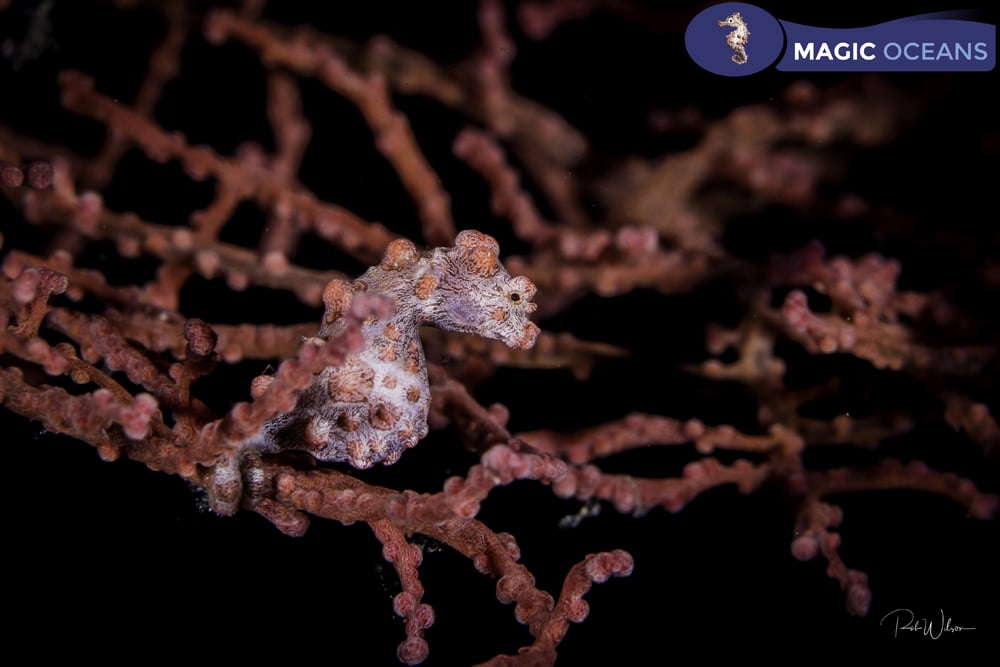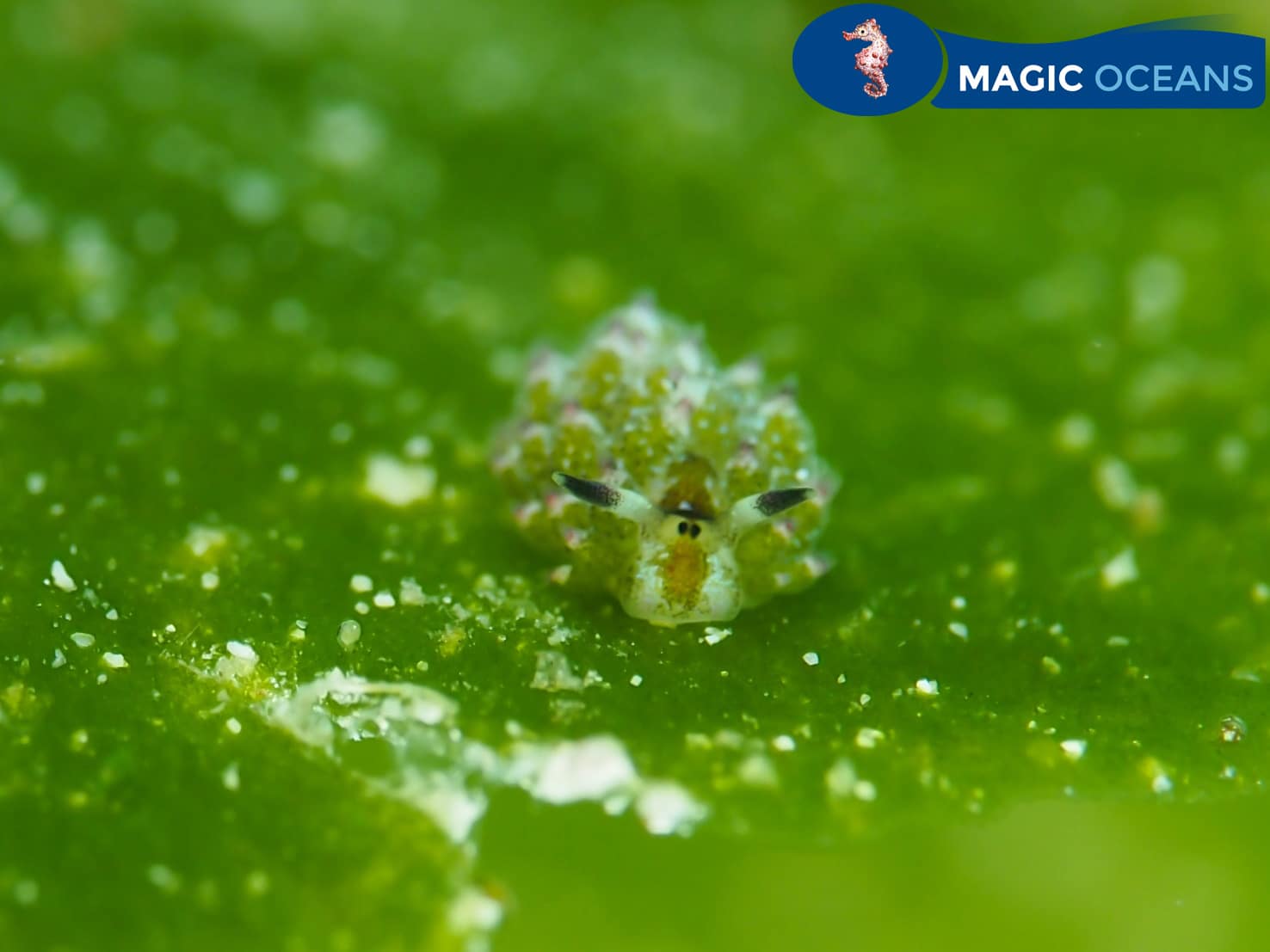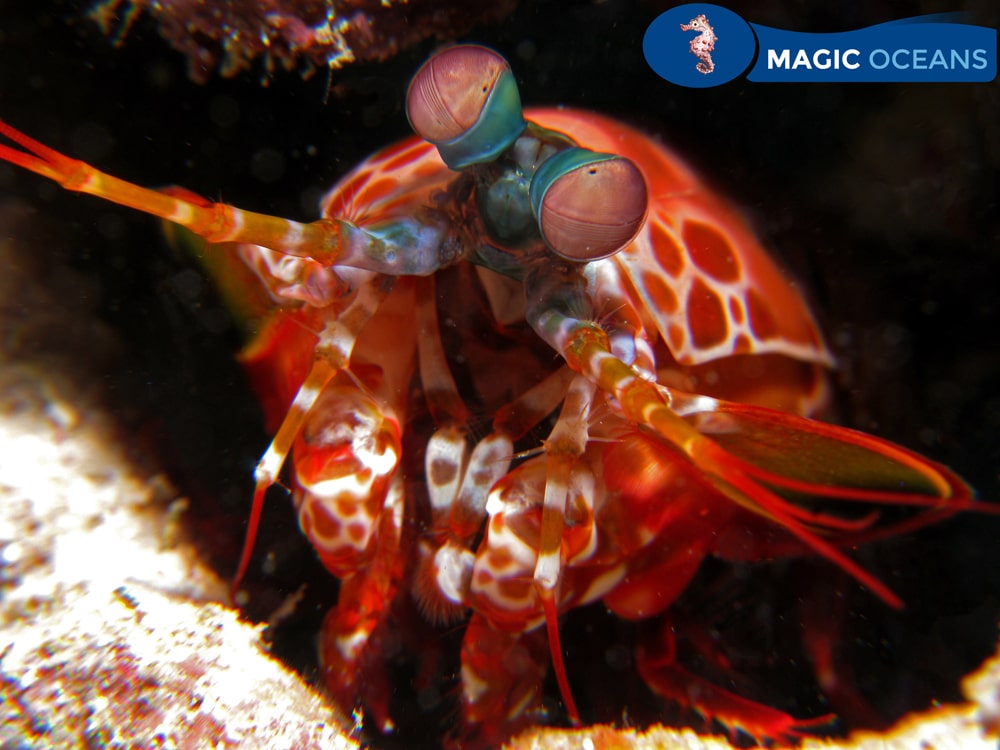News
Diving with… Marlon Managa, Magic Oceans Dive Resort, Anda, Bohol, Philippines

In this ongoing series, we speak to the people who run dive centres, resorts and liveaboards from around the world about their businesses and the diving they have to offer…
What is your name?
Marlon Managa
What is the name of your business?
Magic Oceans Dive Resort
What is your role within the business?
Assistant dive center manager, dive master & in-house marine biologist.
How long has the business operated for?
Magic Oceans Dive Resort opened its doors in July 2015.
How long have you dived for, and what qualification are you?
I started diving in 2010 as a divemaster and I have several certifications in marine biology.

What is your favorite type of diving?
Difficult question! I like many types of diving but if I need to choose, I would say a night dive or muck dive to find macro critters in sandy areas. However, I do love colorful corals and walls full of life as well!
If you could tell people one thing about your business (or maybe more!) to make them want to visit you what would it be?
Visit Magic Oceans Dive Resort because Anda is still a pristine place that is full of wildlife on land and underwater, from the tiny colorful critters to the biggest fish in the world: the Whale Shark!
What is your favorite dive in your location and why?
That would be any dives at the mystical “LAMANOK ISLAND”. Here, you can find a lot of special and rare macro critters (my favorites!). At this dive site you can find a great wall and a sandy bottom: the perfect place to find cool and rare nudibranchs – that’s why we also call this place ‘Nudibranch Heaven’. On top, you can find here special creatures like the mimic octopus, wunderpus, blue ringed octopus, different kind of shrimps and crabs, and even rays!
What types of diving are available in your location?
You can make a lot of different dive types in Anda: drift diving, muck diving, night diving, or of course exploring walls and/or coral gardens. We even offer black water diving for those who have the courage!
What do you find most rewarding about your current role?
Simple appreciation is one of the most rewarding things in my opinion.
I love talking to people and making new friends. Besides, my passion is diving, so what’s better than doing the things you love everyday?
Finally, I’ve been doing a lot of marine biology works before and I am ready to contribute my expertise about that. It’s rewarding for me to do the job I love, helping the company be its best, make new friends and share my knowledge with the guests and my colleagues.
What is your favorite underwater creature?
Nudibranchs!! All of them!!
Are there any exciting changes / developments coming up in the near future?
Maintaining high standards for diving is what we aim for all the time at Magic Oceans. We strive to be the best dive team in Anda and of course that’s something you need to work on (and be aware of) every day. Slight changes and developments include boat upgrades and more local dive masters to be trained as the number of guests increases every year!
As a center what is the biggest problem you face at the moment?
Major concern for us is mainly the laws and regulations among weather circumstances, which sometimes disallow us to go out with the boat for a boat dive.

Is your center involved in any environmental work?
At the moment, we are working on a project: coral and giant clam transplantation. Aside from that, we also work together with the local schools and colleges closely, to create proper education and awareness about our marine environment.
How do you see the SCUBA / Freediving / snorkeling industry in your area? What changes would you make?
The good thing about Magic Oceans/Anda is that we are far away from mass tourism, which means we can still offer diversity in a pristine and untouched area – there are not a lot of places anymore worldwide where you can find untouched reefs and where you feel like you’re the only diver in the world! Of course we want to show this precious area to every diver in the world! But for now, we’re still that hidden, secret paradise.
What would you say to our visitors to promote the diving you have to offer?
Like I already mentioned, there are not a lot of places anymore where you feel like you’re the only diver in the world! We are located in a hidden paradise where you can find the XXS Pygmy Seahorse and the XXL Whale Sharks. Combined with a great team of dive masters that are able to find the most tiny creatures in the ocean, diving at Magic Oceans is a must-do for both beginners and experienced divers!
Where can our visitors find out more about your business?
Magic Oceans Dive Resort
Candabong, Anda
6311, Bohol, Philippines
Website: www.magicoceans.online
e-mail: info@magicresorts.online and reservations@magicresorts.online
Facebook: @magicoceans.diveresort
Instagram: @magic_oceans_dive_resort
News
Book Review: Fire on Monroe Bravo by Fred Lockwood

Fire on Monroe Bravo is the latest book in the Jack Collier series by Fred Lockwood. Our story begins with our lead characters, Jack and Sandro, owners of Marine Salvage & Investigation Company, arriving on the Monroe Bravo Oil & Gas Platform in the North Sea. Having secured a contract for their vessel the MV Stavanger to act as support ship to the platform for TransGlobal Oil, our protagonists are on a celebratory visit.
However almost as soon as they arrive a series of explosions rock the platform, causing huge damage, loss of life and the very real danger of a massive human, ecological and financial disaster.

As the danger mounts for both our heroes and the surviving workers, Jack and Sandro will have to escape the inferno, all while trying to save the platform and the men still trapped unable to help themselves.
The disaster sets the scene for the unfolding story lines following the fate of the platform and our main characters, the police investigation into a suspected terrorist act and the actions of TransGlobal Oil as they attempt to navigate the pubic outcry and financial repercussions.
In his eighth book, Fire on Monroe Bravo, Fred Lockwood delivers an explosive thriller, with plenty of above and in-water drama, and our heroes fighting for survival, what more can you ask for?
We thoroughly recommend this read and look forward to the next in the series. For more information about his book series, you can check out the reviews of his previous books here on Scubaverse.
- Title: Fire On Monroe Bravo
- Author: Fred Lockwood
- ISBN: 979-8325324536
Available in a paperback version and for Kindle from Amazon and book stores.
Blogs
Alonissos: The complete diving destination (Part 1)

In June we were incredibly fortunate to be invited to dive in Alonissos, a small Greek Island in the Sporades island chain located in the North Aegean Sea. While I have long been a big fan of the Greek Islands as a great holiday destination, I had not had the opportunity to do any diving on previous visits and Mike and I were extremely excited to see what Alonissos had to offer both above and below the surface!

The Sporades are easily accessible via the airport in Skiathos (the first island in the chain), which is served by Jet2 flights from all major UK airports from May through October. Numerous ferries and charter boats make island hopping from Skiathos Town a breeze. After an hour boat ride, the picturesque port of Patitiri was a wonderful introduction to Alonissos, where we were met by our gracious hosts Kostas of Albedo Travel and Dias of Alonissos Triton Dive Center. Mike and I were delighted to be staying at the Paradise Hotel, aptly named for its stunning views over the sea and great location for walking to the waterfront.

Alonissos is beautifully situated in the National Marine Park of Alonissos and the Northern Sporades, the largest marine protected area in Europe. The surrounding seas offer fabulous marine life, including incredibly rare species such as the Mediterranean monk seal. They boast deep walls covered in gorgonians and sponges, stunning topography with caverns, swimthroughs and pinnacles, and the first accessible ancient shipwreck from 500BC!

In locations where historical sites have been reported, the waters are largely restricted, but with collaboration between government, underwater archeologists and dive centres, incredible underwater museums are being created for a truly unique diving experience. Alonissos is home to the first of these, the Ancient Shipwreck of Peristera Accessible Underwater Archeological Site. The chance to dive into history (along with reports of healthy reef life and amazing underwater topography) meant Mike and I were keen to get in the water.

Our introduction to the diving around Alonissos was at the Agios Georgios Pinnacles, in the channel between Alonissos and Skopelos. This fantastic site was named “The Chimney,’ and proved to have a huge amount to see. We got to a decent depth here (over 25m), and marvelled at a colourful reef wall with a wonderful swim through whose rocky walls were absolutely covered with life. As well as brilliant topography there was no shortage of macro life here. We saw numerous nudibranchs, five different species in total. The second dive at Mourtias reef nearby was a shallower dive along a nice wall with lots of crevices. Several moray eels and grouper called this site home. We enjoyed looking in the crevices for lobster and smaller benthic life, such as cup corals and tunicates.

Our itinerary allowed us two dives a day with afternoons left to explore the island with our hire car and evenings to enjoy the famous Greek hospitality. This proved to be a lovely mix of in-water and land based diversions.

The next days diving to the Gorgonian Gardens and Triton’s Cave was to be even better! These two stunning sites are nothing short of fabulous. The Gorgonian Gardens was a deep wall near to the Agios Georgios islands. The ever-present currents in this deep channel meant that the sea life was amazing … the namesake Gorgonian sea fans dotted the wall at a depth of 30 to 50 meters, getting ever larger the deeper we went. Above 30m was by no means less beautiful, with sponges, corals, scorpionfish, moray eels and some rare and colourful nudibranchs.

The second shallower dive of the day was to Triton’s Cave or the Cavern of Skopelos, on the east side of that island. The spectacular rock formations had wild striations both above and below the water making a truly epic topography. The cavern entrance was at 14m, and big enough for a buddy pair, winding up to 6m and passing two beautiful windows out into the blue. Emerging from the cavern, the light at the shallower depths and the incredible rock formations made for a fantastic gentle swimming safety stop and we all surfaced by the boat with massive grins.

Check out our next blog :Alonissos: The complete diving destination (Part 2)” to hear about our amazing dive on the 2500 year old Peristera Wreck!
Thanks to:
Alonissos Triton Dive Center https://bestdivingingreece.com/
Albedo Travel https://alonissosholidays.com/activities/
Paradise Hotel https://paradise-hotel.gr/
Alonissos Municipality https://alonissos.gr/en/
-

 Blogs2 months ago
Blogs2 months agoDiving With… Nico, Ocean Earth Travels, Indonesia
-

 News1 month ago
News1 month agoMurex Bangka Announce New Oceanfront Cottages & Beachfront Dining
-

 Blogs2 months ago
Blogs2 months agoA new idea in freediving from RAID
-

 Marine Life & Conservation1 month ago
Marine Life & Conservation1 month agoIceland issue millionaire whale hunter a licence to murder 128 vulnerable fin whales
-

 Marine Life & Conservation2 months ago
Marine Life & Conservation2 months agoThe Shark Trust Great Shark Snapshot is back
-

 News3 months ago
News3 months agoCharting New Waters; NovoScuba Goes Global with the Launch of their Revolutionary Dive Training Agency!
-

 Gear News1 month ago
Gear News1 month agoNew Suunto Ocean – a dive computer and GPS sports watch in one for adventures below and above the surface
-

 Marine Life & Conservation Blogs2 months ago
Marine Life & Conservation Blogs2 months agoBook Review: Plankton
















